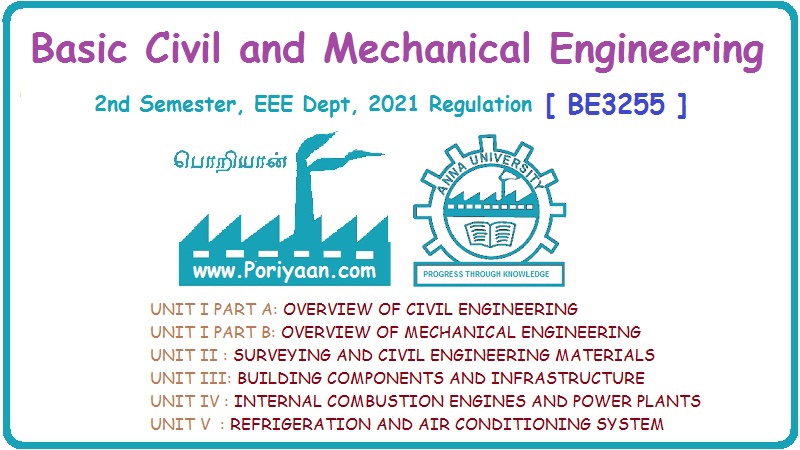Basic Civil & Mechanical Engineering: UNIT I: b. Structural engineering
Design of complex structures – an overview
Complex structures have complex geometry and are subjected to a combination of loads, viz., axial, bending, shear and twisting loads. Few typical examples for complex structures
DESIGN OF COMPLEX STRUCTURES – AN OVERVIEW
Complex
structures have complex geometry and are subjected to a combination of loads,
viz., axial, bending, shear and twisting loads. Few typical examples for
complex structures are shown in Fig. 9.

The
stress induced in a structure depends on the geometry and type of loading. As
long as the geometry and loading of structures are simpler, simpler analytical
equations (similar to what is presented in previous sections) can be used to determine
the stress and deflection.
However,
in order to predict the stress and deflection of complex structures, numerical
techniques like Finite Element Method (FEM) need to be used. Structural
designers need to ensure that the stress developed in structures is always less
than the strength of the material for safety
Basic Civil & Mechanical Engineering: UNIT I: b. Structural engineering : Tag: : - Design of complex structures – an overview
Related Topics
Related Subjects
Basic Civil and Mechanical Engineering
BE3255 2nd Semester 2021 Regulation | 2nd Semester EEE Dept 2021 Regulation
